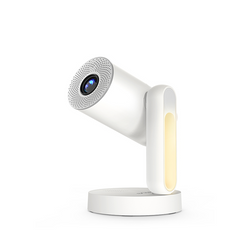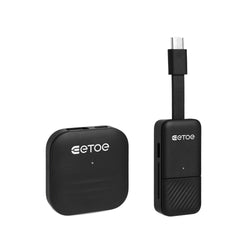Einführung
Wenn Sie den richtigen Projektor für Ihre Anforderungen auswählen möchten, ist es wichtig, die unterschiedlichen Spezifikationen und Funktionen der einzelnen Modelle zu kennen. Zwei Begriffe, die beim Kauf von Projektoren häufig verwendet werden, sind ANSI und Lumen. Obwohl sie austauschbar erscheinen, beziehen sie sich tatsächlich auf unterschiedliche Aspekte der Helligkeit eines Projektors. In diesem Artikel werden wir uns den Unterschied zwischen ANSI und Lumen genauer ansehen und erklären, warum die ANSI-Helligkeit bei Projektoren besonders wichtig ist.
ANSI-Helligkeit vs. Lumen
Lumen ist ein Begriff, der häufig verwendet wird, um die Helligkeit eines Projektors zu beschreiben. Er bezieht sich auf die Gesamtmenge an Licht, die von der Lampe oder LED-Quelle des Projektors abgegeben wird. Allerdings geben Lumen nicht immer ein genaues Bild der Helligkeit eines Projektors wieder. Das liegt daran, dass Lumenmessungen in einem dunklen Raum vorgenommen werden und die Auswirkungen des Umgebungslichts auf die Bildqualität nicht berücksichtigen.
Hier kommt die ANSI-Helligkeit ins Spiel. Die ANSI-Helligkeit (American National Standards Institute) ist eine genauere Messung der Helligkeit eines Projektors, da sie den Einfluss des Umgebungslichts berücksichtigt. Die ANSI-Helligkeit wird gemessen, indem eine Reihe von Rechtecken mit unterschiedlicher Helligkeit und Kontrast auf eine Leinwand projiziert und die reflektierte Lichtmenge gemessen wird. Der Durchschnitt dieser Messungen wird dann zur Ermittlung einer ANSI-Helligkeitsbewertung herangezogen.
Warum ANSI-Helligkeit wichtig ist
Bei Projektoren ist die ANSI-Helligkeit besonders wichtig, da sie eine genauere Messung der Helligkeit des Projektors unter realen Bedingungen ermöglicht. Dies liegt daran, dass die meisten Projektoren in Umgebungen mit Umgebungslicht eingesetzt werden, beispielsweise in einem Konferenzraum oder einem Klassenzimmer. Ohne eine genaue Messung der Helligkeit eines Projektors unter diesen Bedingungen kann es schwierig sein, zu wissen, ob der Projektor ein klares und helles Bild liefert.
Darüber hinaus ist die ANSI-Helligkeit wichtig, da sie Ihnen dabei helfen kann, den richtigen Projektor für Ihre Anforderungen auszuwählen. Wenn Sie Ihren Projektor in einer Umgebung mit viel Umgebungslicht verwenden möchten, beispielsweise in einem gut beleuchteten Konferenzraum, benötigen Sie einen Projektor mit einer höheren ANSI-Helligkeitsbewertung. Wenn Sie den Projektor hingegen in einer dunkleren Umgebung verwenden, beispielsweise in einem Heimkino, reicht möglicherweise eine niedrigere ANSI-Helligkeitsbewertung aus.
Fazit
Bei der Auswahl des richtigen Projektors ist es wichtig, den Unterschied zwischen ANSI und Lumen zu verstehen. Lumen wird zwar häufig zur Beschreibung der Helligkeit eines Projektors verwendet, liefert jedoch nicht immer ein genaues Bild der Leistung des Projektors unter realen Bedingungen. Die ANSI-Helligkeit hingegen berücksichtigt den Einfluss des Umgebungslichts und bietet eine genauere Messung der Helligkeit eines Projektors. Indem Sie einen Projektor mit der richtigen ANSI-Helligkeitsbewertung für Ihre Anforderungen auswählen, können Sie sicherstellen, dass Sie die bestmögliche Bildqualität erhalten, egal wo Sie Ihren Projektor verwenden.















Hinterlasse einen Kommentar
Diese Website ist durch hCaptcha geschützt und es gelten die allgemeinen Geschäftsbedingungen und Datenschutzbestimmungen von hCaptcha.